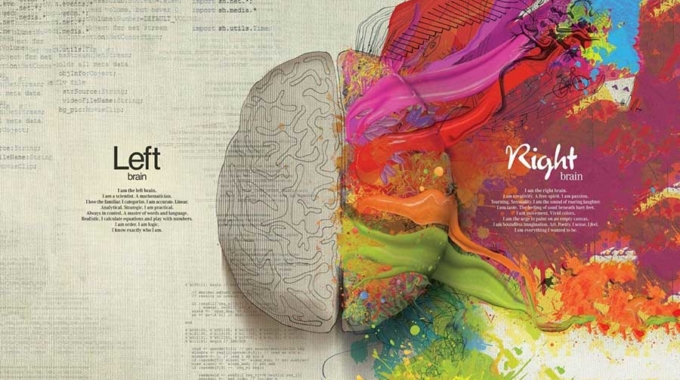Floating and Your Left / Right Brain
Over the past few weeks, we’ve had quite a few inquires as to how floating influences brain activity – specifically left and right brain activity. Shockingly, insight into how these two sides of our brain interact and how they impact our daily life has only recently become a priority. In fact, it wasn’t until the 1960s that serious research went into exploring the two hemispheres of our brain. In a series of studies, Roger Sperry, Michael Gazzaniga, and Joseph Bigon found that the left and right brain function in fundamentally different modes. The majority of people are left-brain dominant – meaning that they think more logically, analytically, and sequentially. Floating has been shown to increase right-brain thinking, encouraging individuals to be more intuitive, imaginative, and creative.
Most people are born with incredibly high right-brain activity. In The Book of Floating by Michael Hutchinson, he mentions that “in their play, their fantasies, their thinking, children show strong right-brain activity – they’re diffuse, intuitive, visual, musical, and they seem to have no sense of time, responding to unpredictable inner rhythms”. Unfortunately, as we progress through school, right-brain qualities are causes for criticism. By college, left-hemisphere dominance is firmly established. While left-brain attributes are incredibly important, experts agree that the ability to balance and improve the synergistic relationship between the two sides leads to a more productive and rewarding life.
In the float room, EEG measurements of brain activity suggest that the left hemisphere is “somewhat suspended and the right hemisphere ascends in dominance” (Budzynski 1983). It seems that when external stimuli are turned off, people have an easier time accessing their right-brain. While right-brain dominance has a multitude of benefits, it’s important to note that one side is not better than the other. What can be accomplished in the float room is the synchronization of brain waves and hemispheric harmony. As Hutchinson notes, “the tank does not block or inhibit the left hemisphere, instead, it simply changes its role from one of dominance to one of partnership with the other hemisphere, enabling floaters to use all their mental powers”. This partnership may certainly account for some of the “Eureka!” moments our clients have experienced in the tank!
Improved synchronization, intuition, and creativity are just a few of the amazing effects of sensory deprivation. If you’re looking for new ways to spark your artistic side or find solutions to troubling problems, floatation therapy might just be the thing for you!
Katie




